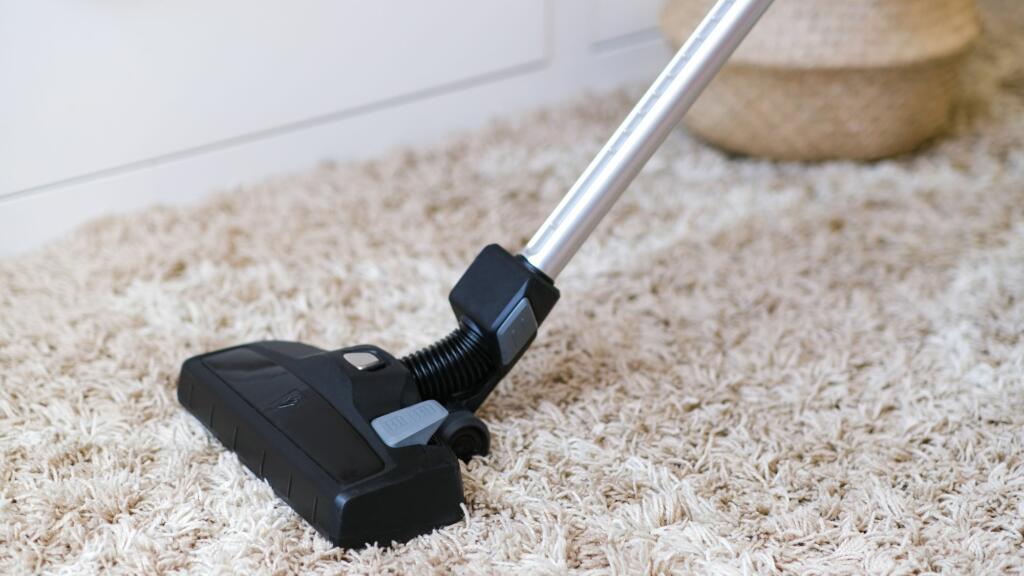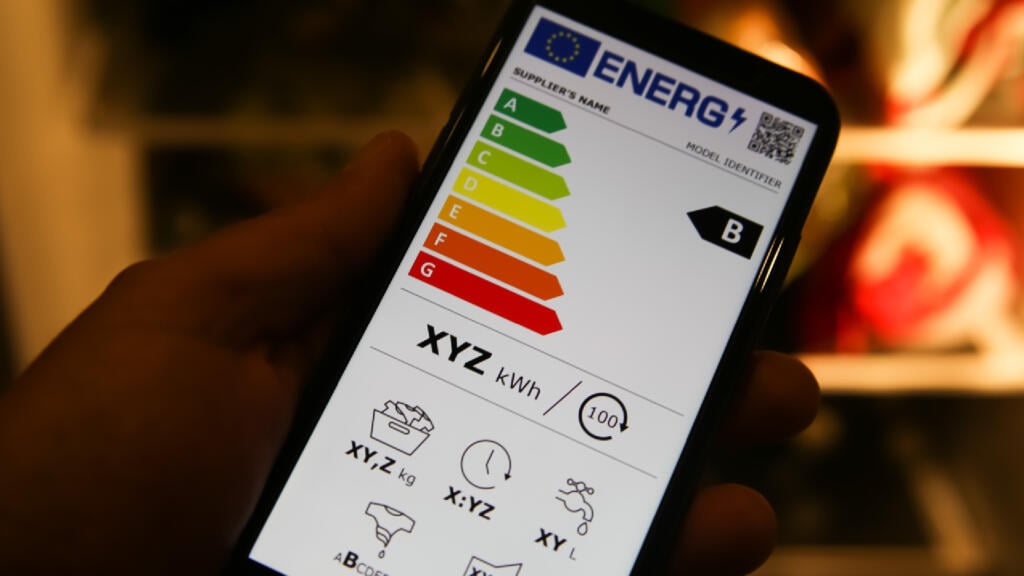
Dyson vs Shark: which vacuum brand is right for you?
Jayne Cherrington-Cook
In the market for a new vacuum cleaner? Our guide will help you find one that doesn’t suck. (Well, only when it needs to…)
Shopping for a vacuum cleaner used to be a simple process. There weren’t many brands or variations around and they were all roughly the same price.
Now, you can choose from cordless, upright, bagless, robotic, cylinder – the list is endless. And while we all love choice, sometimes it can be a bit overwhelming.
To make buying a vacuum cleaner an easier process, the first step is to work out what type of vacuum cleaner would best suit your lifestyle.
Shopping for a vacuum cleaner used to be a simple process. There weren’t many brands or variations around and they were all roughly the same price.
Now, you can choose from cordless, upright, bagless, robotic, cylinder – the list is endless. And while we all love choice, sometimes it can be a bit overwhelming.
To make buying a vacuum cleaner an easier process, the first step is to work out what type of vacuum cleaner would best suit your lifestyle.
 Credit: Shutterstock
Credit: ShutterstockIf you live in a small flat, chances are a lightweight cordless vacuum will do the job. But if you’ve got pets, especially cats and dogs, you’ll need something sturdier, designed to help suck up that never-ending stream of fur.
There are many other factors to consider before deciding on your chosen type of vacuum – from cost to ease of use, and even noise level.
Regardless of what type of vacuum you choose, it’s also paramount to work out how long that purchase is going to last, especially as vacuum cleaners can cost hundreds of pounds these days.
“Don’t forget to look at the durability of vacuum cleaners,” says Sarah Dempsey, cleaning expert at Myjobquote.co.uk.
“Go to an electrical shop, so you see for yourself how robust it is. But also check the availability of replacement parts such as batteries, filters and attachments. These are usually the first things to break or wear out, so being able to get new parts will save you needing to buy a new vacuum every few years.”
Prices for vacuum cleaners start as a little as £25 for a handheld and can go up to the thousands for a state-of-the-art cleaner. Set a budget before you start shopping so that you don’t overspend.
“If you have hard floors, pay close attention to the vacuum’s head,” advises Dempsey, who says you want to look for one with soft, fluffy or non-scratch brush bar.
If you have hard and soft floors, a vacuum with adjustable bars or rollers is ideal so you can clean all floors effectively.
Vacuum cleaners should be easy to manoeuvre and use. If you have mobility issues, consider a robotic vacuum or a lightweight cordless model.
Pet hair means you need a vacuum cleaner that won’t die as soon as it inhales the fur. Look for those that have additional pet-friendly features such as upholstery attachments or odour control.
Larger houses need a vacuum cleaner with a bigger bin capacity so it doesn’t have to be emptied as frequently. If you’re going down the cordless route, it will also need the power to last long enough to clean everywhere.
For smaller homes, a vacuum cleaner that can be wall mounted is a bonus.
While cordless gives you greater flexibility to move around your home, corded vacuums generally have a bit more suction power than their untethered friends.
Suction is measured in air watts. The higher the air watts, the more powerful the vacuum cleaner. An upright vacuum cleaner should have at least 100 air watts to effectively clean your home.
Unfortunately, few manufacturers publish this information and the wattage you normally see is electrical, which doesn’t usually correlate to suction power.
Vacuum cleaners can be noisy, so it is important to choose one that is quiet enough to be comfortable to use. According to the RNID, an ordinary spoken conversation is around 60dB, while a food blender is around 85dB.
Best for: Those who have larger floor spaces, carpets or pets
Pros
Cons
 Credit: Shark
Credit: SharkAs the name says, an upright vacuum cleaner is a type of vacuum cleaner that stands upright on the floor. It has a long, flexible hose attached to a motorised head used to clean carpets and floors.
More powerful than cordless vacuum cleaners, corded upright vacuum cleaners have great suction, so are perfect if you have carpets throughout your house. Some manufacturers do also have cordless models, such as the Shark ICZ300UKT Anti Hair Wrap Cordless Upright Vacuum Cleaner, but these are harder to find. They’re also less likely to tip over and, because they stand upright, they’re easy to store.
While you can get bagged upright vacuums, most these days are bagless and also come with lots of attachments. Some like the Vax Air Lift Steerable Max Pet Corded Upright Vacuum Cleaner also allow you to lift the main cylinder away from the vacuum, making it more portable.

“If you’re considering a plug-in vacuum cleaner, then check the cord length to be sure you can reach awkward spaces including the stairs without difficulty,” advises Dempsey.
“The larger the capacity of your vacuum, the less you’ll need to empty it,” says Dempsey. “This is worth considering if you have a lot of floor space to cover.”
Dempsey says this is an often-overlooked factor but is definitely something to consider with uprights, as they tend to be the heaviest of all the types of vacuum cleaners available.
She says: “The heavier they are, the more difficult they’re going to be to manoeuvre and use for long periods of time.”
Best for: Small homes or for people with mobility issues
Pros
Cons
 Credit: Hoover
Credit: HooverThey may not be the most high-tech vacuum cleaners but if you want a good value machine that cleans well, a cylinder vacuum is for you. Their size makes them great for smaller homes and while you can purchase expensive cylinder vacuum cleaners (like the Miele Blizzard CX1 Cat & Dog Flex Vacuum Cleaner, which retails at £489), there are also lots of budget options available under £100.
They’re typically more powerful than most other vacuums as well and have a larger cleaning radius than most uprights, thanks to the length of the cord.
Designed to be pulled behind you, it has a small cylinder on wheels. This makes it a good choice for anyone with problems in their hands, arms or shoulders as it needs less effort than traditional push vacuum cleaners. It does, however, require you to bend over, so if you have back problems a stick or upright will be a better choice.
“Vacuums that have long hoses, hinged arms or detachable parts are easier to use,” says Dempsey. “Look at the type of attachments that are available too.”
Some hoses stretch to twice their length enabling you to reach higher up, go under furniture without having to move it and do the stairs without having to drag the cylinder along with you.
While there are bagless cylinder vacuum cleaners available, bagged ones are still readily available, which Dempsey says is a good thing to consider if you have allergies.
“They reduce your contact with dust, pollen and dander when you’re emptying it,” she says.
It also means you don’t need to clean your vacuum bin as you just vacuum and then throw the bag in the bin.
If you have a hairy pal, choose a special pet version such as the Henry Pet Pro (£189.99, John Lewis) or the Vax Air Stretch Pet (£100, Argos), both of which come with special pet tools and filtration to reduce exposure to pet-related allergens around the home.
Best for: Those who need a lightweight, easy-to-use cleaner
Pros
Cons
 Credit: Shutterstock
Credit: ShutterstockAs the name suggests, stick vacuums have a tall, thin body. Apart from that, they operate the same as upright models.
“The main advantage of a stick vacuum is versatility; in theory they can do most of the tasks that a traditional upright or cylinder type vacuum could do but are generally lighter,” says Nick Grey, the inventor and founder of Gtech.
They’re great for quick clean-ups and are often cordless, making them convenient for small spaces. They often have a smaller dust capacity, though, which means they’re not a great choice if you have a larger home to vacuum.
For Grey, the major drawback of sticks is the added maintenance they require compared to their upright or cylinder counterparts.
“Stick vacuums suffer with blockages more than traditional vacuums because they have long tubes and limited air flow,” he explains.
“Whereas old fashioned vacuums could generate 30 to 40 litres of air flow per second, modern stick vacuums generally generate five to 15 litres per second. This can result in them being prone to dirt and debris lodging in the tubes and blocking them up.”
He says to retain air flow you will need to regularly clean your vacuum cleaner, including the filters inside your stick vacuum. If you don’t, you risk having to replace the machine only a couple of years after purchasing.
If you’re on a budget, though, stick vacuums are typically less expensive than other types of vacuums. The size of stick vacuums also makes them easy to store and great for smaller houses or flats.
Dempsey says: “If storage space is at a premium in your home, you’ll want a vacuum that’s wall-mountable or compact.”
“If you’re about to buy a new stick vacuum, look out for one with anti-twist or similar technology, as this means you won’t have to worry about removing tangled hairs from the brush,” says Catrin Davies, product manager at SDA Hoover.
This is a common feature on many stick vacuums and allows you to increase the suction for tough areas. Many models will have a ‘boost’ mode for extra power but the battery will drain faster if your cleaner is cordless.
Stick vacuums generally have a smaller capacity than other types of vacuum cleaners. Uprights generally have a bin capacity of over a litre (1.75 pints), while stick vacuums can be as little as 0.3 litres (half a pint). Some like the Shark Anti Hair Wrap Cordless (£429) do come with a decent 0.7 litre (1.23 pints) capacity, so it pays to do some research if you’re looking for a larger capacity.
Best for: Versatility and easy cordless cleaning
Pros
Cons
 Credit: Vax
Credit: VaxLooking for freedom for you and your vacuum? Then cordless is the perfect type of vacuum cleaner for you. It not only allows you a huge cleaning radius but also means you don’t have to tangle with cords getting in the way.
You can get both cordless upright and stick vacuums, although the latter is more common. The best cordless vacuum will be fairly lightweight and easy to move around, which is pro if you have any mobility issues.
Great for any quick cleans – just switch on and go – they may not have quite the suction as corded models. However, as technology evolves, this is becoming less of a problem. Battery life can be a real problem, though, especially if you have a larger house, says Dempsey.
She adds: “For cordless vacuums, you should look at the battery life and charge time to see if it’s practical for your needs.”
Bear in mind, though, that if you want a cordless vacuum that delivers the same performance as a corded one, you will have to splash the cash. You can buy cheaper models but they often don’t have the power and suction. However, these can be useful for quick cleans.
Double up your cleaning time by investing in another battery. Some manufacturers do packages where you can buy an additional one with your vacuum but, if they don’t, it’s worth splashing out as you can always make sure you’re charged and ready to vac.
If you plan to use your cordless for cleaning other than your floor, the weight is something you’ll need to consider.
“Manufacturers often show users with the long tubes fitted effortlessly cleaning around the ceiling and other areas of the home, but actually most, if not all, stick cordless vacuum cleaners are very tiring to use in this manner,” says Grey.
Cordless vacuums often come with a wide variety of attachments, but Dempsey says there’s only two that you really need for effective cleaning.
“A nozzle or crevice tool for using in corners and along ledges and skirting. And an upholstery attachment, so you can tackle soft furnishings including sofas, mattresses, curtains and cushions,” she adds.
Best for: Heavy-duty vacuuming
Pros
Cons
 Credit: Kärcher
Credit: KärcherAs the name suggests, wet and dry vacuum cleaner can handle both wet and dry messes, whether that’s vacuuming up spilt cereal or sucking up the milk that went with it.
They’re also pretty powerful, with great suction, so take heavy-duty tasks in their stride such as unblocking sinks, vacuuming up larger debris or dealing with outdoor messes.
While you can find cordless wet and dry vacuum cleaners, they tend to be corded and are generally very functional machines. Don’t expect high-tech design features such as lasers or LCD screens – these are made to handle the tough stuff. It also means they’re often not small, so you’ll need the storage space.
Some wet and dry vacuum cleaners also come with a blower function, which can be useful for clearing away leaves or even drying your car after a wash.
This is one vacuum that is only going to get heavier the more you clean, due to it filling with water. You can get smaller models, such as the Vax OnePWR Glide Cordless Upright Hard Floor Cleaner (£199, Currys) but bear in mind they may not have the suction power of the bigger, heavy-duty vacuum cleaners.
Wet and dry vacuum cleaners do so much more than just clean up spills, so the more attachments they come with the more you can get out of them. Some brands like Kärcher , for example, offer a multitude of different attachments, including an innovative drill dust catcher, which catches the dust as you drill.
Best for: A no-effort daily vacuum
Pros
Cons
 Credit: iRobot
Credit: iRobot Robotic vacuum cleaners are a convenient option for those who want to automate their cleaning routine. They can be programmed to clean at specific times and can navigate around furniture and obstacles on their own.
“A good quality robot vacuum should be able to take on hard floors and carpet and do a reasonable job,” says Dempsey.
“If you’re short on time and have kids or pets, using a robot vacuum on a daily basis is a good way to prevent a build-up of dirt.”
However, Dempsey does say that robot cleaners aren’t as effort-free as you may think, as you need to clear the floorspace of any obstacles, including power cables and toys. And while it can go under furniture, it can’t get into little crevices or cope with stairs.
“It won’t be as thorough as vacuuming yourself as there will be crevices and corners the robot just can’t reach,” she says.
While they’re not as powerful as other types of vacuums and struggle with picking up larger debris, they are superb used for a daily clean in between human vacuuming sessions.
If you’re going to go automated, why not invest in a robot vacuum cleaner that can also empty itself? Self-empty bases are becoming more common now and they allow your vacuum to empty their bin and then carry on with the job at hand.
Best for: Small and quick clean-ups
Pros
Cons
 Credit: Black & Decker
Credit: Black & DeckerDesigned for quick clean ups, handheld vacuum cleaners are small and portable. Typically, cordless and lightweight, they’re easy to use and are great for quick spills, cleaning the car or even tackling the stairs.
Most come with a charging station, like the Beldray Airlite Cordless Hand Vacuum, meaning you can leave them on charge so they’re ready to jump into action when needed. This also makes them a great option if you have a caravan and want to vacuum while you’re away.
The suction power is limited, as is the bin capacity, but they’re a great addition to your cleaning routine when used in conjunction with your main vacuum cleaner.
While these vacuum cleaners aren’t intended to be used for long period of times, a corded model may be a better choice if you don’t want to recharge constantly.
If you have weak hands or wrists, you’re going to want a lightweight number so it doesn’t put strain on your joints.
To make your handheld a more versatile vacuum cleaner, it’s worth checking to see what attachments or nozzles it comes with. For example, the Tineco PURE ONE MINI S4 Smart Cordless Handheld Vacuum (£129) has three – regular, extension attachment and dust attachment – which allows you to do more jobs on the run.

Written by Jayne Cherrington-Cook she/her
Published: Updated:
Jayne is the Senior Editor at Saga Exceptional. She cut her online journalism teeth 24 years ago in an era when a dialling tone and slow page load were standard. During this time, she’s written about a variety of subjects and is just at home road-testing TVs as she is interviewing TV stars. A diverse career has seen Jayne launch websites for popular magazines, collaborate with top brands, write regularly for major publications including Woman&Home, Yahoo! and The Daily Telegraph, create a podcast, and also write a tech column for Women’s Own.

Jayne Cherrington-Cook

Jayne Cherrington-Cook

Jayne Cherrington-Cook

Camilla Sharman